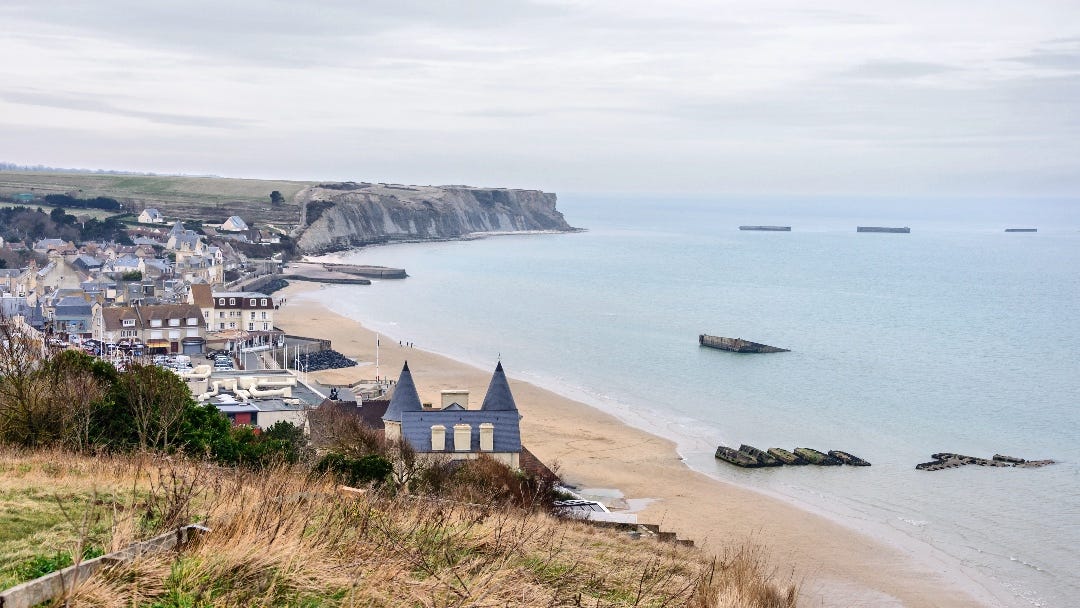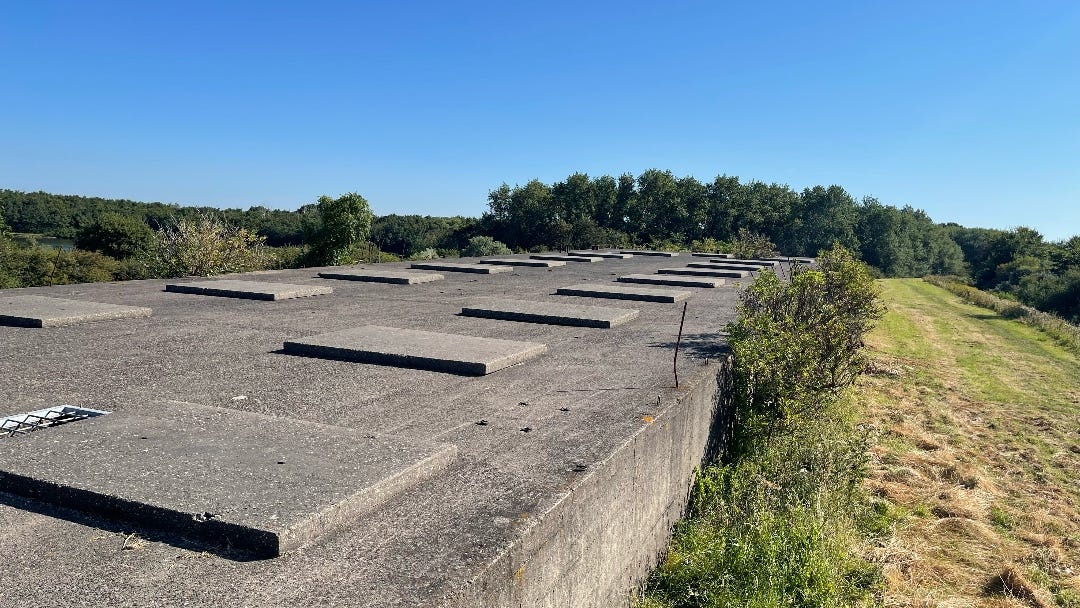
Following the D-Day invasion on June 6, 1944, the Allies faced the daunting task of landing troops and supplies on the French coast. With existing harbors either occupied by Germans or at risk of destruction, temporary harbors, known as Mulberry Harbors, were urgently needed. Central to this effort were the Phoenix caissons—massive floating concrete units constructed in England and transported across the Channel to Normandy.
The Allies sank these caissons to create breakwaters, enabling the safe landing of vast amounts of goods, food, armory, and soldiers. I recall seeing some of the remnants of these caissons near Arromanches during a fascinating week of touring the D-Day beaches some twenty years ago.
Many do not know that more caissons were built than were needed for the war effort. These surplus caissons remained in southern England until they found a new purpose eight years after a catastrophic event in the Netherlands. In 1953, the North Sea flood claimed 1,836 lives in the Netherlands and caused widespread devastation, especially in the province of Zeeland. Engineers used the remaining caissons to close breaches in the dikes.
Today, several of these caissons, once destined for wartime use, are part of the island's landscape, a short ride from where I live in Zeeland. They connect to the fight for freedom in 1944 and the centuries-long fight against water that defines the history of the Zeelandic islands.
Keep reading with a 7-day free trial
Subscribe to The Planet to keep reading this post and get 7 days of free access to the full post archives.





